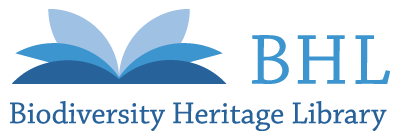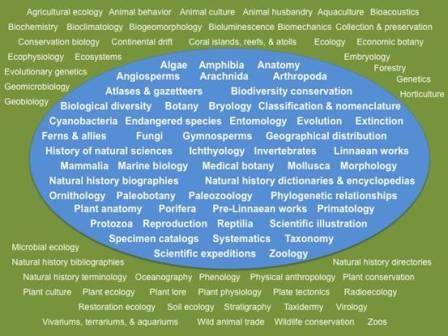Imagine a natural history library open 24 hours a day with all your essential journals and books inside. The
Biodiversity Heritage Library will be that Library. It is available 24 hours, wherever you are, for free, with over
38 million pages of information already scanned and more being added everyday.
http://www.biodiversitylibrary.org/
It all started about 2005 with a consortium of Natural History and Botanical Libraries meeting to organise the what
and how of a freely available resource of biodiversity literature. The consortium was mostly based in the USA (eg
Smithsonian, Missouri Botanic Garden, American Museum of Natural History) plus the NHM and Kew. The idea was to
create a freely available resource containing the legacy literature of biodiversity taken from the collections of
the members of the consortium. The first portal was launched was in 2007.
The participating institutions realised that their collections of rare and historic scientific information that are
essential for taxonomics and systematics were available to visitors only. Natural history is unusual in science in
that historic data is essential and must be consulted. Hence BHL is destined to be one of the largest subject
specific resources on the Internet.
The material scanned into BHL includes anything in the public domain (upto 1923 in the USA and 100 years old in the
UK) or items where agreement has been reached with the copyright holder. Recently material has been ingested from
sources other than the BHL consortium members such as the Internet Archive, the University of Illinois at
Urbana-Champaign. Additionally any user may request items for digitisation (using the feedback button on the top
right of the BHL screen).
This amazing resource is free to use and is available anywhere that has Internet access, so from the Museum, from
home and out in the field. All pages are index for scientific names using UBIO (http://ubio.org/ ). Material can
be downloaded as a PDF or OCR, all or page by page or just images. The bibliographic information can be downloaded
in MODS, BibTeX or EndNote format. The information downloaded can be saved, re-used or re-purposed freely, see the
BHL Flickr site http://www.flickr.com/photos/biodivlibrary/sets/. BHL also has a presence on Facebook, Twitter and
itunes, and has a blog featuring book of the week, articles by users of BHL, information about meetings and new
developments, and much more!
By promoting itself as an open digital collection, BHL allows the taxonomic names and associated bibliographic
information to be used by other digital initiatives such as Encyclopedia of life http://eol.org/, Tropicas
http://tropicos.org/, Biostor http://biostor.org/ and Citebank http://citebank.org/.
The BHL family is expanding with collections coming online for Europe, Australia, China, Brazil and Egypt. Also
negotiations are underway to initialise a project for Sub-Saharan Africa.
Chris scanning at the Scribe machine.
The Natural History Museum has contributed 639 titles to BHL since scanning started in 2007. Scanning is carried
out using a Scribe machine which incorporates a super structure that supports two cameras on sliding tracks, lights
(continuous, not flash), a bed and glass platen set at an angle, with a foot pedal for raising and lowering the
platen. The Cameras are Canon Mark IIs. Images are processed using software developed at Internet Archive
(processing includes cropping, rotating/ de-skewing, and converting from RAW to JPEG2000) and then uploaded to the
Internet Archive, where they are further converted to .pdf, .epub, etc. The scans need to be associated with the
appropriate metadata from the Library catalogue, achieved using Z39.50 technology. Library staff are heavily
involved in the preparation of items for scanning.
Help expand the BHL user-base and have a look today. If you need any help please contact me via library@nhm.ac.uk.




